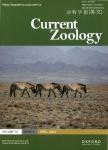Developmental ecology of the American horseshoe crab Limulus polyphemus
Developmental ecology of the American horseshoe crab Limulus polyphemus作者机构:Department of Natural Sciences Fordham University Department of Biological Sciences Florida Institute of Technology Department of Ecology Evolution and Natural Resources Rutgers University
出 版 物:《Current Zoology》 (动物学报(英文版))
年 卷 期:2010年第56卷第5期
页 面:550-562页
核心收录:
基 金:supported by a series of awards from New Jersey Sea Grant support from the U.S. Army Corps of Engineers, Philadelphia District supported by National Park Service Grants Nos.CA518099049 and PS 180060016
主 题:Horseshoe crab Limulus Development Embryo Larval dispersal
摘 要:During spawning events, horseshoe crab eggs are released from the female's oviducts, and fertilized by one or more males. Eggs are shaped by the female into discrete clutches deposited in nests at depths of 10-20 cm on intertidal estuarine beaches. Distinguishing between fxesh eggs and the early developmental stages is obfuscated by the large amount of dense, opaque yolk. The first unambiguous confirmation of development is the formation of the rudimentary prosomatie appendages at the "limb bud" stage. Several days thereafter, the outer chorion is shed and the developing embryo expands and undergoes a series of molts within the clear inner egg membrane. The trilobite (first iustar) stage thus attained may remain within the beach sedi- ments for several more weeks, until hatching is facilitated by environmental factors such as hydration, agitation, and osmotic shock that accompany the infiltration of seawater into the nests. Trilobites exhibit endogenous eirgatidal swimming rhythms that are entrained by mechanical agitation, suggesting that peaks in larval swimming are timed to coincide with periods of high water and the inundation of the nests. Larval swimming is limited and does not appear to result in long-distance dispersal. The limited dispersal of the larvae has important implications for the population dynamics of relatively isolated populations. The rate of larval development is highly plastic and is influenced by temperature, salinity, dissolved oxygen, and the presence of pollutants. The broad environmental tolerances of horseshoe crab embryos and larvae are important in understanding their current geographic distribution and their evolutionary persistence



